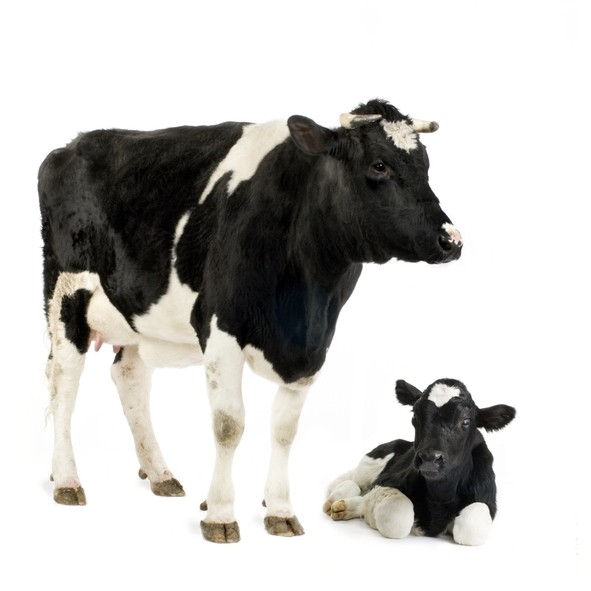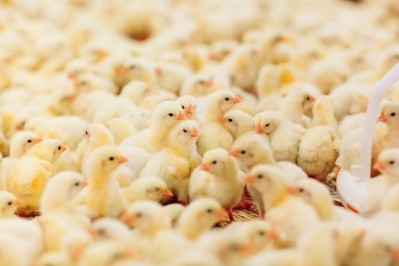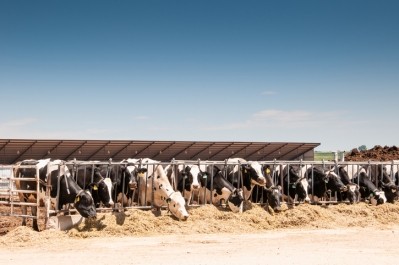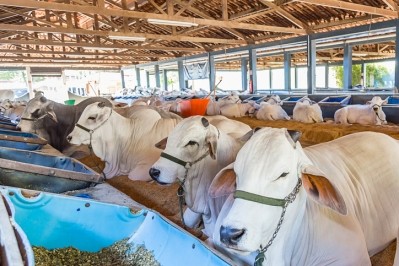Rumen-protected glucose seen to boost milk production in transition dairy cows

A Chinese team assessing the effect of added RPG in transition dairy cow diets found it improved milk production without affecting milk composition.
Such supplementation also reduced inflammatory markers in transition cows, said the researchers.
Their study was published in Animal Feed Science and Technology.
The key findings of this study, said the authors, were that supplementation with RPG in transition cows improved the postpartum lactation performance - milk yield – increased the degree of negative energy balance, and appeared to reduce the incidence of inflammation.
“However, cows in the transition period supplemented with 200g RPG per day might experience fatty acid accumulation in the liver, which has a negative effect on hepatic function.
“Further research is needed to study how the RPG supply influences the energy redistribution during the transition period in dairy cows.”
Drop in feed intake during transition period
The transition period is widely recognized as one of the most critical periods for dairy cows.
"There is now a substantial body of evidence clearly confirming that the transition period represents a brief but critically important period of time in a cow’s life where careful manipulation of diet can impact substantially on subsequent health and productivity."
Source: Ian Lean and Peter DeGaris, 2010, Transition Cow Management [Produced as part of Dairy Australia’s Grains2Milk and InCalf programs.]
“It can involve cows having a sharp decline of voluntary feed intake and negative energy balance (NEB), due to the high energy demand for growth of the fetus and uterus during late pregnancy and for milk synthesis during early lactation, especially in high-yielding animals (Brown and Allen, 2013; Agrawal et al., 2017).”
Managing cows during the transition period should be geared towards reducing NEB or feeding specially formulated diets to improve immunity (Esposito et al., 2014), they said.
Among the many methods of managing transition cows, the authors said dietary management is most prevalent and effective.
“Much research has been performed on dietary management, including, for instance, dietary supplementation with monensin, essential oils, and conjugated linoleic acid (Soosten et al., 2011; Drong et al., 2017; Hausmann et al., 2018).”
Glucose in lactating dairy cows
Glucose (GLC) is a critically important nutrient in all species, but it is especially pertinent to lactating dairy cows, as ruminants rely almost exclusively on hepatic gluconeogenesis instead of dietary carbohydrate digestion and absorption to meet their GLC requirements (Kvidera et al., 2017), said the researchers.
The team said, based on previous studies, increasing the small intestinal GLC supply could be an effective way to enhance the physiological status of beef cattle and dairy cows, the idea being that post-ruminal GLC supply would increase the body's total GLC provision and then improve the performance and liver function of dairy cows during the transition period.
Therefore, they said their objective was to add RPG to the transition diet of dairy cows in order to investigate its effects on dry matter intake (DMI), milk yield, milk composition, nutrient digestibility, and plasma biochemical indices in transition dairy cows.
Methodology of study
In their trial, 12 Holstein cows, aged 4–5 years, and in late gestation, were allotted to one of two treatments - a basal diet plus 200 g/d of RPG or a basal diet plus 90 g/d of coating fat (CON).
They explained that the RPG was manufactured by a patented technique, and contained 450g/kg of GLC as the core with 450g/kg of fat as a coating and 100 g/kg of water. The product is granular, with a particle diameter of 0.6 - 0.85 mm, and it was supplemented according to the manufacturer’s recommendations at 200g per cow daily. Considering the possible effect of coating fat in RPG, coating fat was supplemented in the control group at 90g per cow daily.
The RPG and coating fat were both top-dressed on the total mixed ration (TMR).
They said the diets were applied from one week before to two weeks after calving. They recorded animal performance data and determined the overall tract apparent digestibility of prepartum or postpartum cows. They also took blood samples at various intervals to examine the plasma biochemical parameters and pro-inflammatory cytokines.
Findings
The RPG supplementation increased the milk yield, but did not change the dry matter intake, said the academics.
Compared with cows in the CON group, the plasma total protein concentration was lower in the RPG group, said the research group.
The team saw that cows in the RPG group had greater plasma albumin concentrations but lower globulin and interleukin-8 concentrations during the transition period.
RPG supplementation tended to increase the plasma alanine aminotransferase concentration but did not change the plasma aspartate aminotransferase concentration, they said.
Dietary RPG supplementation increased the non-esterified fatty acid concentration and tended to decrease the plasma glucose concentration, they added.
In conclusion, the authors said their results indicate that supplementation with 200g of RPG per day improves milk production and reduces inflammatory markers but might have compromised the liver function of the transition cows in this study.
“Based on our research results and considering the small number of animals in the present study, further research is needed to explore the impacts of RPG on intestinal GLC absorption and feed intake regulation.”
Word of caution
The researchers said the dairy farm for the current study was located in Hunan Province, a typical subtropical-region in southern China.
“Because of high ambient temperatures and/or humidity, etc., the dairy cow population in Hunan Province has a lower milk production level. Furthermore, the time (June to July) of this experiment was in summer. At that time, the daily average temperature was 34 ± 0.35 °C, and the daily average humidity (g/kg) was 940 ± 12.5. Therefore, the dairy cows in the current study had low DMI and milk yield.”
Source: Animal Feed Science and Technology.
DOI: https://doi.org/10.1016/j.anifeedsci.2019.04.010
Title: Supplementation with fat-coated rumen-protected glucose during the transition period enhances milk production and influences blood biochemical parameters of liver function and inflammation in dairy cows
Authors: XF Han et al















